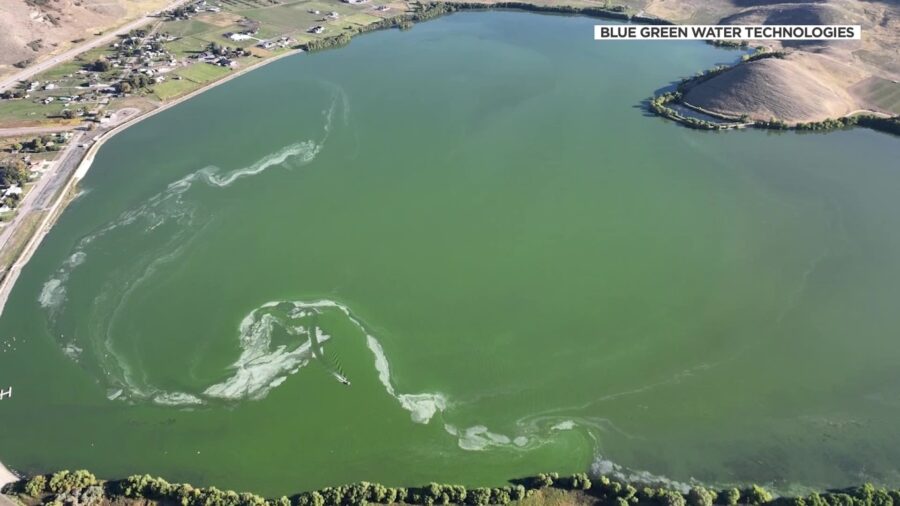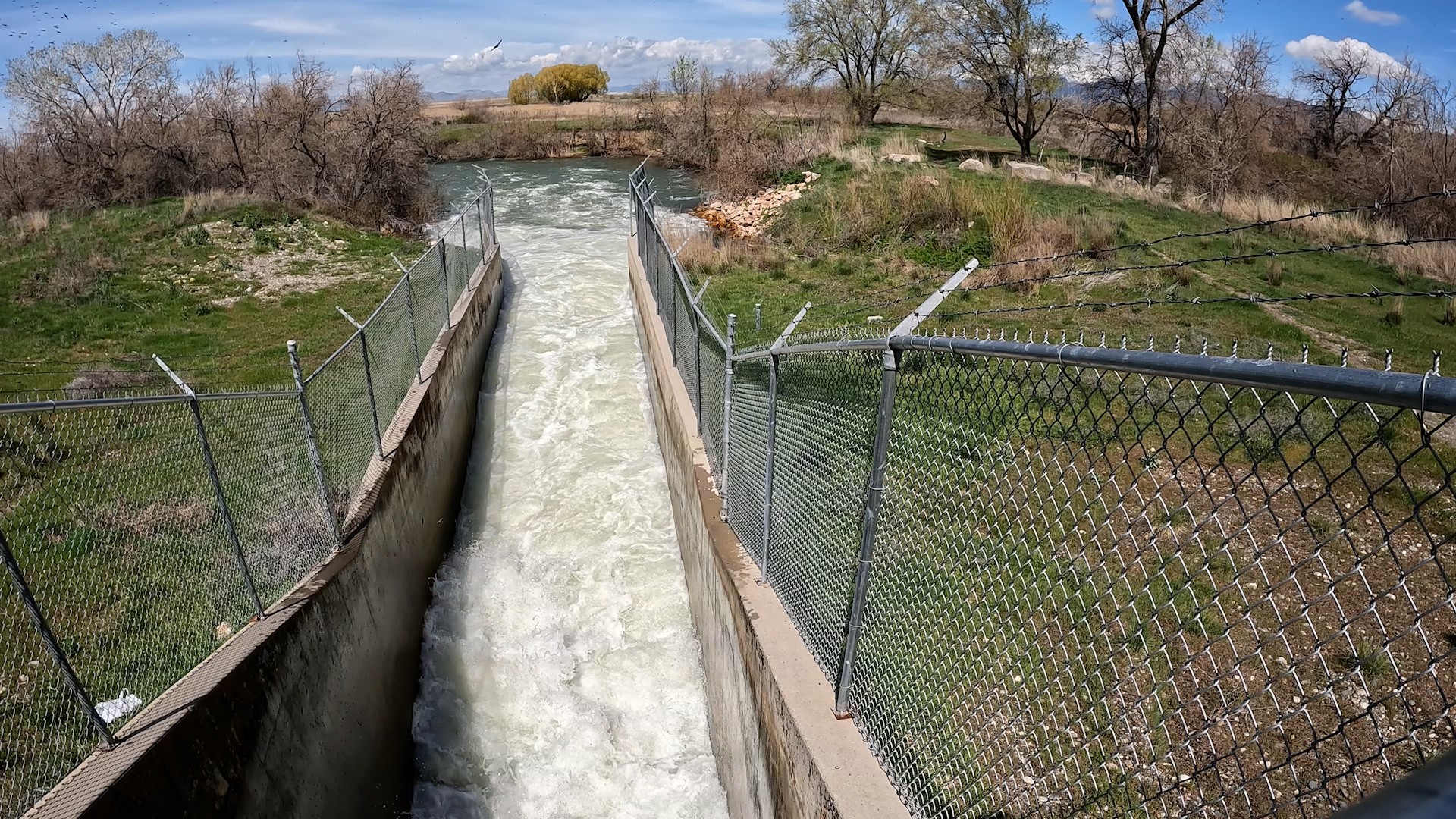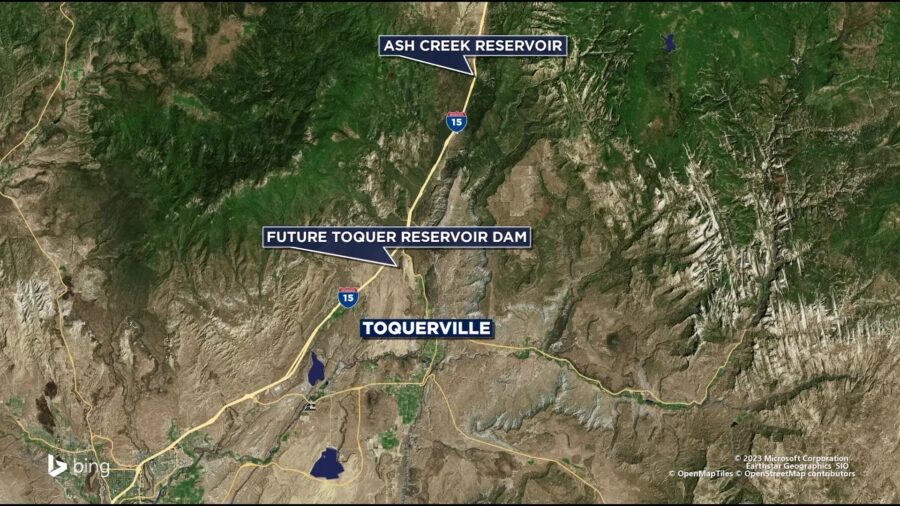Heavy snowpack delays water releases at Flaming Gorge
Mar 14, 2023, 5:14 PM | Updated: Mar 15, 2023, 9:56 am
FLAMING GORGE, Utah — Managers paused water releases from Flaming Gorge Dam months early this week because of this winter’s deep snowpack.
Reservoirs are a way of life in the west.
Not just for future water use, but some also help generate electricity.
The Flaming Gorge Dam in northeastern Utah does both and is an important part of the Bureau of Reclamation’s mission.
However, because of the heavy snowpack Utah has received this year, the Bureau is pausing water releases at Flaming Gorge two months earlier than originally planned.
“We are certainly looking at the snowpack and we’re optimistic that it will result in good runoff,” said Katrina Grantz, deputy regional director for the U.S. Bureau of Reclamation’s Upper Colorado Basin. “It does look like our reservoir will be able to capture a lot of that runoff and that our reservoirs will improve because of their contents.”
Water releases are being paused two months earlier than originally planned due to heavy snowpack in the mountains. We're covering this for @KSL5TV at 5 and 6:30. #ksltv pic.twitter.com/a8B0ULWjjk
— Alex Cabrero (@KSL_AlexCabrero) March 14, 2023
Grantz said pausing water releases will allow the runoff to fill more of Flaming Gorge and save that water for future use. It is all part of the overall Drought Response Operations Plan, which was put in place because of the growing drought concerns.
The 2022 Drought Response Operations Plan called for releasing 500,000 acre-feet of additional water from Flaming Gorge Reservoir to Lake Powell this operational year to protect the Colorado River system.
However, the plan was suspended for the rest of March and April because of the heavy snowpack and runoff projects.
Before pausing the water releases, about 463,000 acre-feet of additional water was sent to Lake Powell from Flaming Gorge.
Last month Lake Powell was the lowest it has ever been since it was first filled six decades ago.
The reservoir, located by the Utah-Arizona border, dropped to 3,521.95 feet elevation on Feb. 19, surpassing the previous record low of 3,522.24 feet set in April 2022, said Department of Reclamation spokesperson Becki Bryant. She added that the lake is expected to continue to drop until the snowpack runoff begins in the spring.
The pause also means roughly 37,000 acre-feet of water will stay in Flaming Gorge, which is about 1.2 feet of water in that reservoir.
Since 2021, the plan has helped to keep about 20 feet in elevation of water in Lake Powell.
“We’re glad that we took those actions that we took. It has certainly made a difference of about 20 feet at Lake Powell,” Grantz said.
20 feet may sound like a lot, but it’s nowhere near the amount of water Lake Powell has lost.
This season’s snow is nice, but Grantz said conservation efforts are still needed.
“One good year, we’ll certainly take it and we’re very happy about it,” she said. “But one good year cannot make up for two decades of below-average runoff.”
During the first week of March, Utah’s mountain snowpack surpassed 20 inches for the first time since 2019 and only the eighth time over the past 25 years, as storms continued to push this year’s total up into the record books.
The Natural Resources Conservation Service listed the statewide snow water equivalent figure at 20.8 inches of water. The current snowpack is the highest it has been at any point since the 2016-2017 snow collection season peaked at 21.1 inches on March 9, 2017.














